What is Zhurong - Chinese Spacecraft Landed on Mars for the First Time
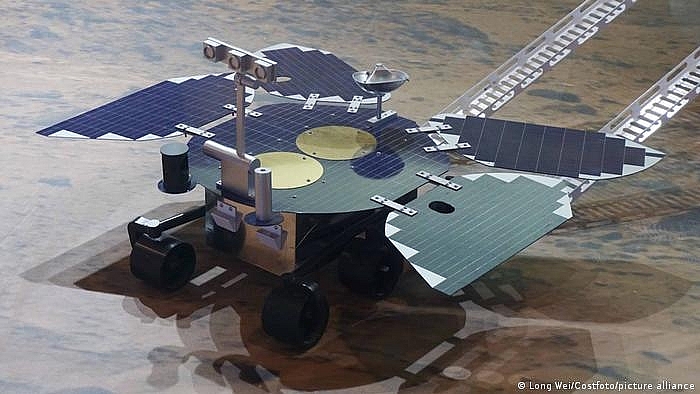 |
| A model of the Zhurong Mars rover at an exposition in Hangzhou |
China into space
The "Zhurong" rover was transported to Mars on the Tianwen-1 orbiter, which reached the Red Planet in February. China is now the second country after the US to successfully land a spacecraft on Mars. The landing is a major advancement for China's space program, which has been increasing its ambitions over the past year.
Touchdown was at 7:18 a.m. Beijing time (7:18 p.m. ET), although more than an hour passed before ground controllers could confirm the landing was a success, Xinhua said. The rover had to open its solar panels and antenna, and then it took more than 17 minutes for its signals to traverse the distance between Mars and Earth.
China's first Mars landing follows its launch last month of the main section of what will be a permanent space station and a mission that brought back rocks from the moon late last year.
"China has left a footprint on Mars for the first time, an important step for our country's space exploration," Xinhua report.
It landed at a site on the Southern Utopia Plain, "leaving a Chinese footprint on Mars for the first time", Chinese Media notes.
China had previously landed on the near and far sides of the moon, in 2013 and 2019 respectively, before completing a complex lunar sample return late last year.
However, landing on Mars poses a more difficult challenge, as the planet has its own atmosphere, unlike the moon.
NASA Associate Administrator Thomas Zurbuchen tweeted his congratulations, saying, "Together with the global science community, I look forward to the important contributions this mission will make to humanity's understanding of the Red Planet."
China has said it wants to land people on the moon and possibly build a scientific base there. No timeline has been released for these projects. A space plane is also reportedly under development.
| Chinese President Xi Jinping, in a congratulatory letter to the mission team, called the landing "an important step in our country's interplanetary exploration journey, realizing the leap from Earth-moon to the planetary system and leaving the mark of the Chinese on Mars for the first time. ... The motherland and people will always remember your outstanding feats!" |
What is Zhurong rover
The rover, named after the Chinese god of fire Zhurong, is expected to be deployed for 90 days to search for evidence of life. About the size of a small car, it has ground-penetrating radar, a laser, and sensors to gauge the atmosphere and magnetic sphere.
The Zhurong rover weighs approximately 240 kilograms (529 pounds). It has six wheels and four solar panels and is capable of moving on the surface of Mars at a speeds of up to 200 meters (656 feet) per hour.
The rover will stay in the lander and run diagnostic tests for a few days, before rolling down to the surface of Mars to explore an icy area known as "Utopia Planitia."
The lander was able to complete what is called the "seven minutes of terror," which is a treacherous descent through the Martian atmosphere using a parachute.
Xinhua said the entry capsule entered the Mars atmosphere at an altitude of 125 kilometres, initiating what it called "the riskiest phase of the whole mission."
A 200 square metre parachute was deployed and later jettisoned, and then a retro-rocket was fired to slow the speed of the craft to almost zero, Xinhua said. The craft hovered about 100 metres above the surface to identify obstacles before touching down on four buffer legs.
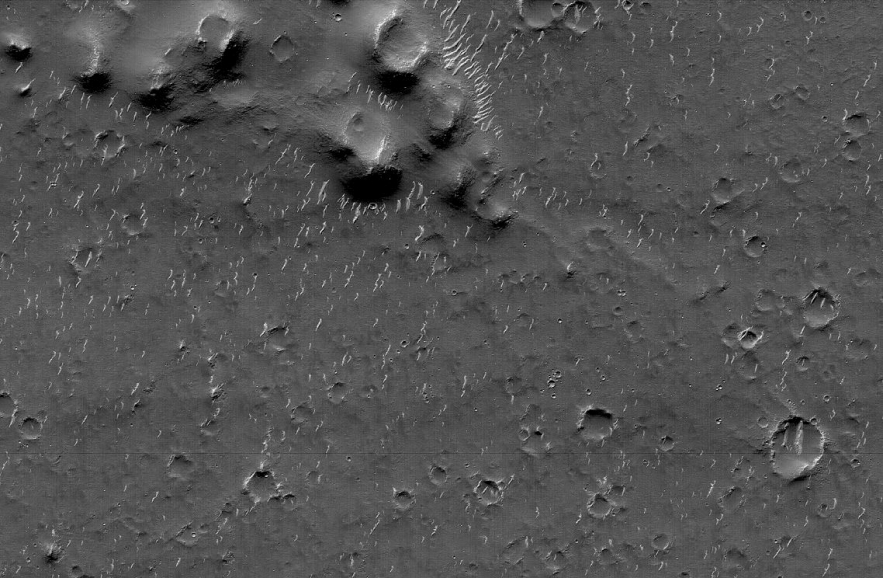 |
| A high-resolution camera image of Utopia Planitia taken by Tianwen-1. Credit: CNSA/PEC |
The rover was transported to Mars on the Tianwen-1 orbiter, which took off from the Chinese island of Hainan in July last year. It was launched by the powerful Long March 5 rocket.
 |
| A crescent of the northern hemisphere of Mars taken by Tianwen-1’s medium-resolution camera in March 2021. Credit: CNSA/PEC |
After over six months in transit, it reached the Red Planet's orbit in February.
Zhurong is equipped with six science payloads, including a laser-induced breakdown spectroscopy instrument for analysing surface elements and minerals, panoramic and multispectral imagers, a climate station, magnetometer and a ground-penetrating radar.
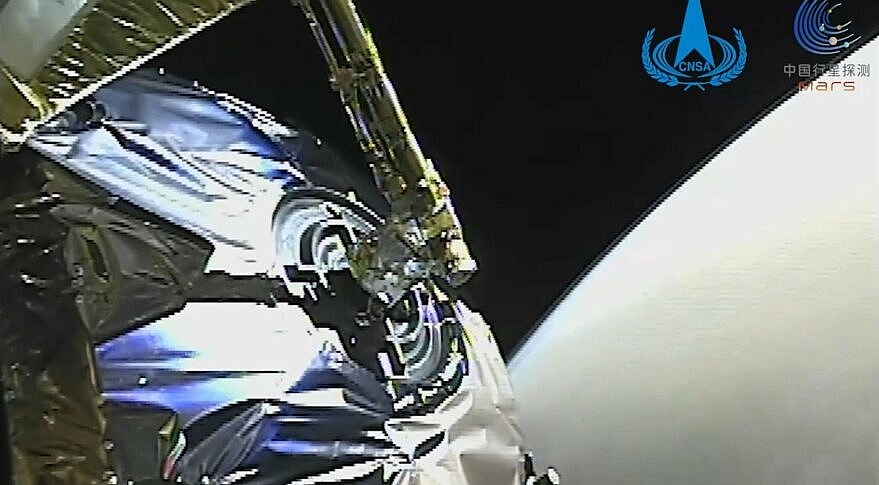 |
| An engineering camera view of Mars as Tianwen-1 enters orbit, months ahead of the Zhurong rover landing attempt. Credit: CNSA/PEC |
After months of collecting high-resolution imagery to map its landing area, Zhurong targeted an area inside Utopia Planitia, understood to center on coordinates of 110.318 degrees east longitude and 24.748 degrees north latitude.
The presence of water ice at the low latitudes of Utopia Planitia could have implications for understandings of potential past or present habitability and was as future crewed Mars missions.
| The U.S. has had nine successful landings on Mars since 1976. The Soviet Union landed on the planet in 1971, but the mission failed after the craft stopped transmitting information soon after touchdown. A rover and a tiny helicopter from the American landing in February are currently exploring Mars. NASA expects the rover to collect its first sample in July for return to Earth in a decade. |
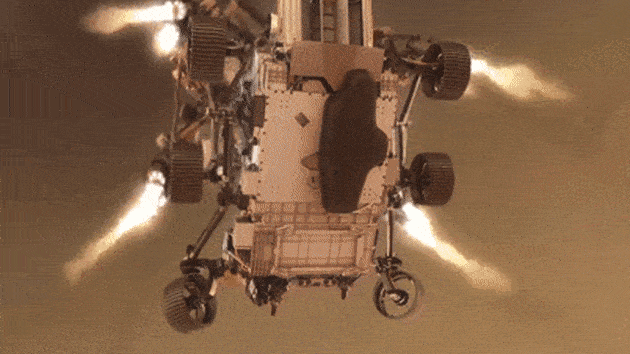 NASA's Perseverance Rover delivered First Helicopter, '10.9 million Names' and 'Covid-19 Tribute' to Mars NASA's Perseverance Rover delivered First Helicopter, '10.9 million Names' and 'Covid-19 Tribute' to Mars NASA's Perseverance rover delivered weird things such as first helicopter, '10.9 million Names', 'Mastcam-Z: "Are we alone?" and 'Covid-19 Tribute' to Mars. |
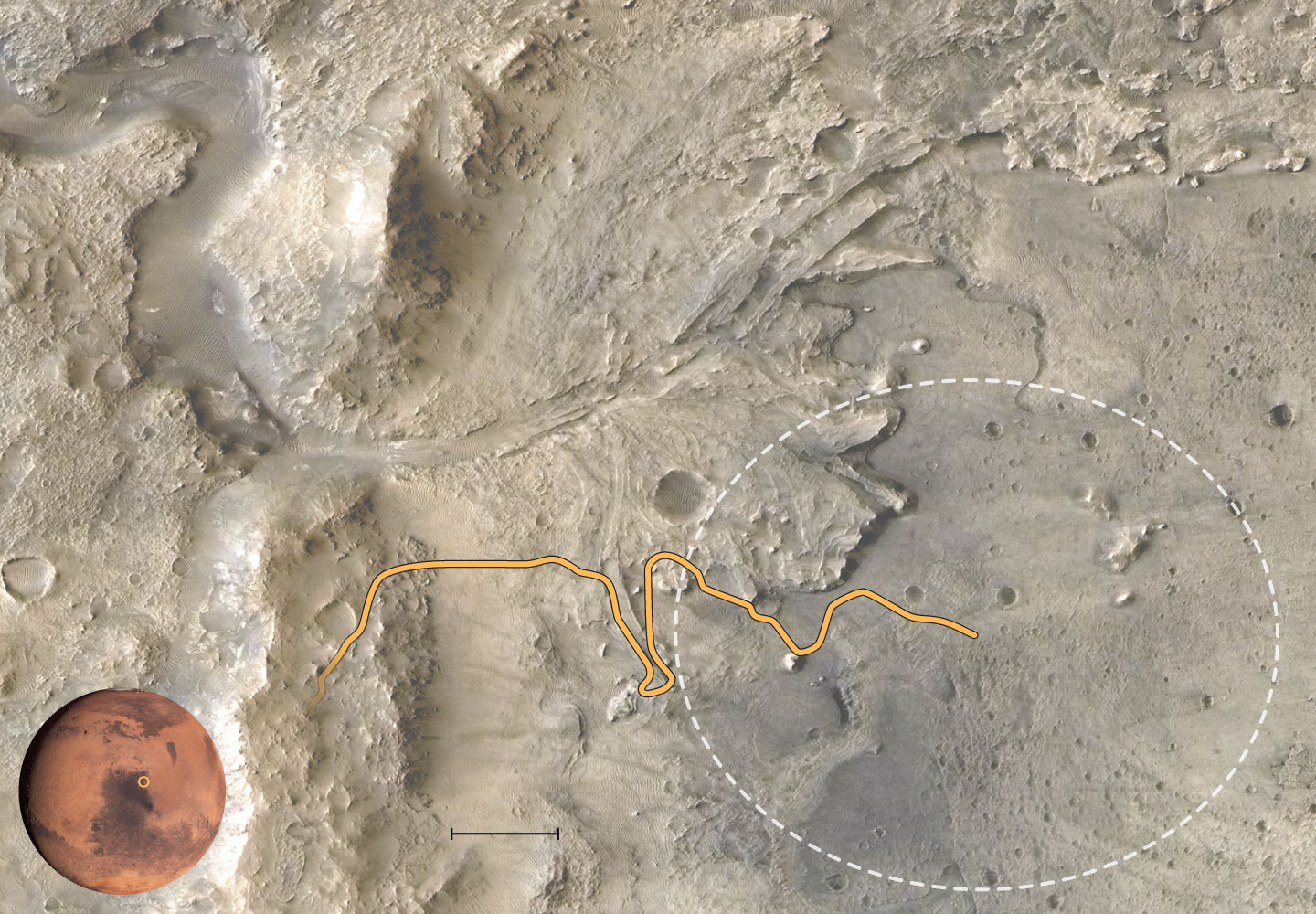 How NASA's Perseverance rover makes history land on Mars - Video How NASA's Perseverance rover makes history land on Mars - Video NASA's Perseverance rover has confirmed to touch down on Mars to conduct its ambitious mission of finding whether life has been existed on the red ... |
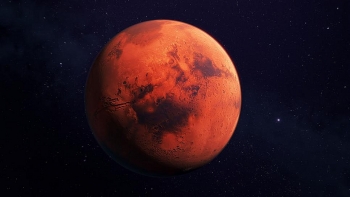 TOP 9 interesting Facts about Mars TOP 9 interesting Facts about Mars Mars is the fourth planet from the Sun and last of the terrestrial planets, that's what we already know about this world. How about the ... |


























